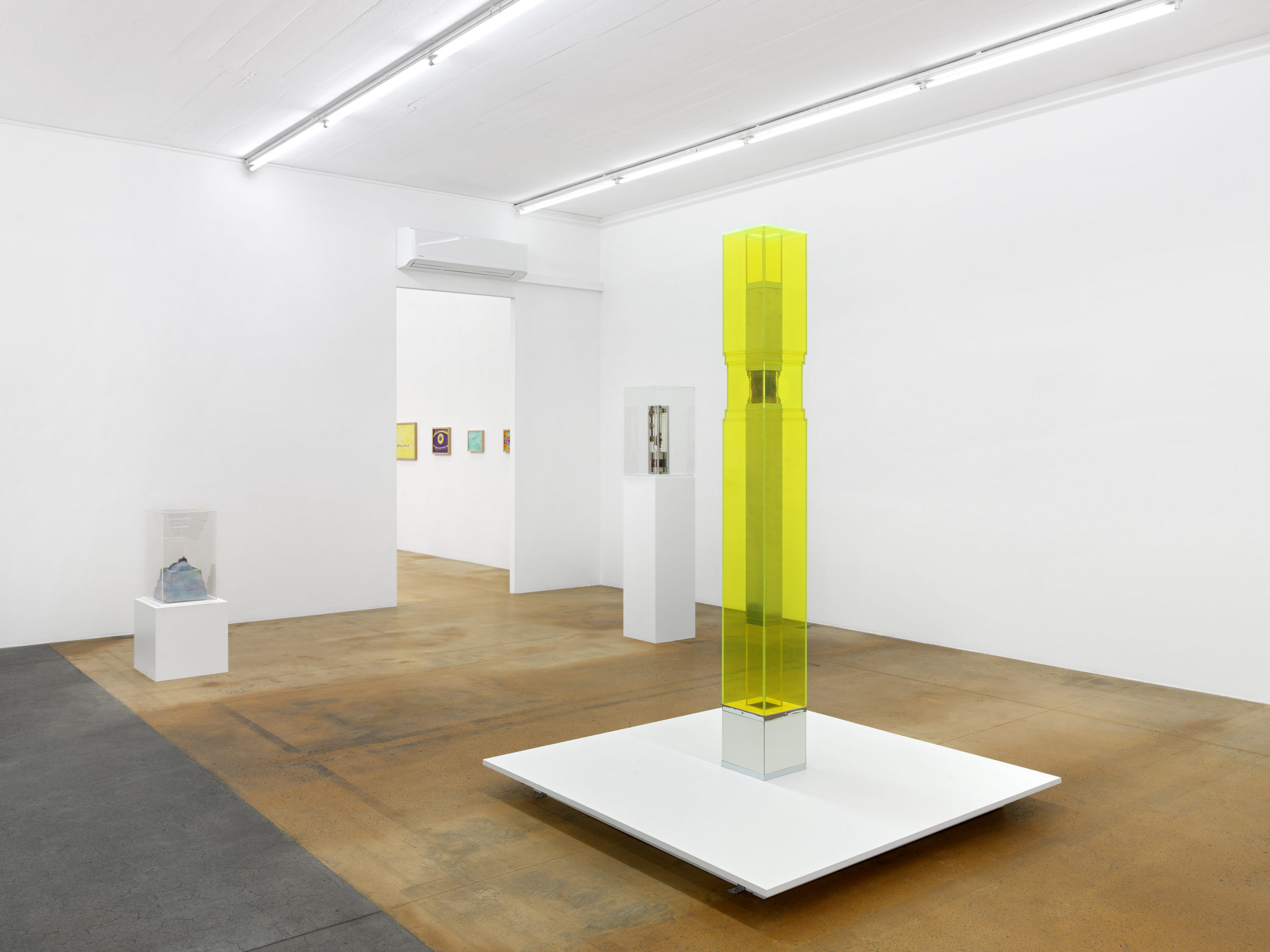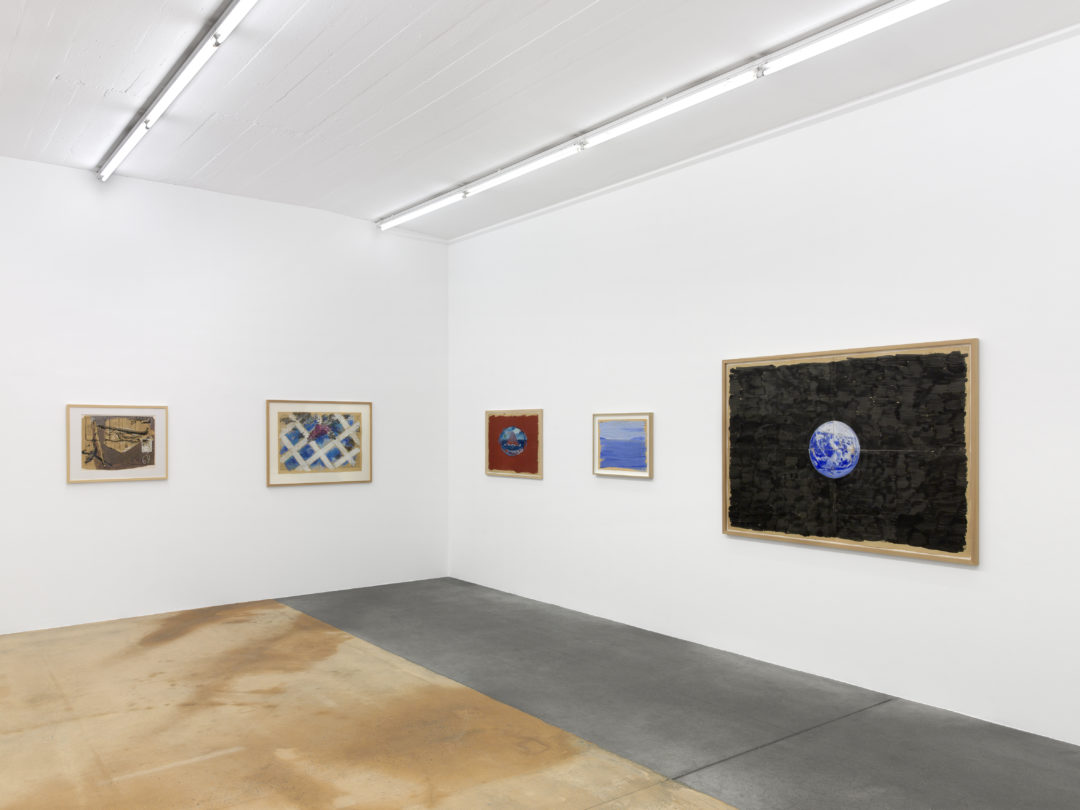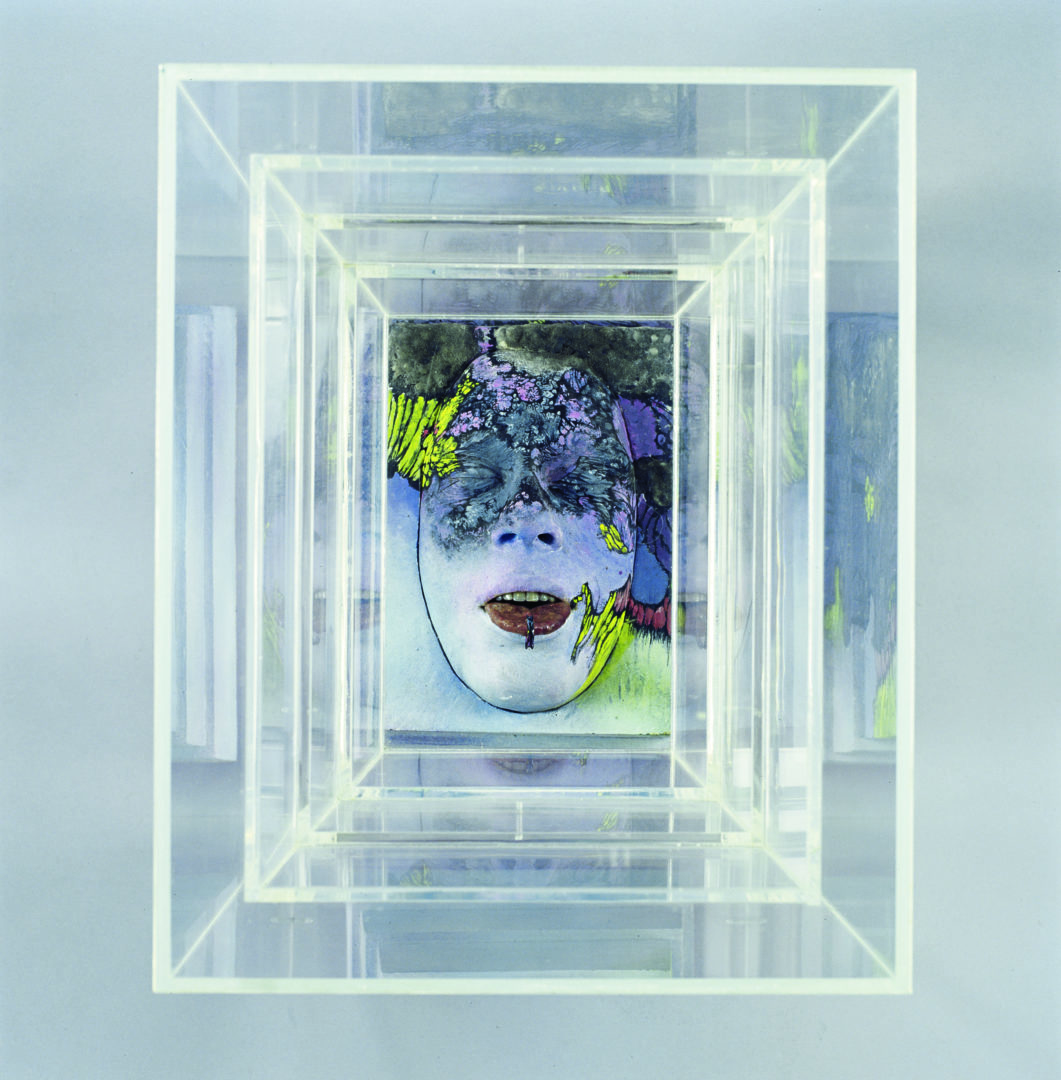Paul Thek at MAMCO, Geneva

Paul Thek
MAMCO, Geneva until June 9, 2024
Far from the huge institutional machines, MAMCO presents a rare exhibition by the legendary American artist Paul Thek (1933-1988).
Curated by Valérie Da Costa, the Geneva museum is bringing together works from public and private European collections in four rooms and under four themes.
An unclassifiable figure in American art in the second half of the 20th century, Paul Thek is an artist who is often described as “an artist’s artist”, so much so did he escape the mainstream of American art in the 1960s. He secluded himself from American society, adopting Italy for fourteen years and ending his life as a novice in a Vermont monastery before dying of AIDS in New York in 1988.

The exhibition opens with two works that sum up Paul Thek’s career. The first is a suspended fabric that uses the signs and colors of the American flag to represent an inverted pyramid. It was created for the artist’s first exhibition in an American institution, at the Institute of Contemporary Art in Philadelphia in 1977 (Processions). The second is a bronze, over two meters high, created in Italy in 1975-76 and entitled Uncle Tom’s Cabin with Tower of Babel (from the series “The Personal Effects of the Pied Piper”). Both form imaginary territories, reminding us that the artist has always been in exile, moving between two continents and two cultures.
In the second room, we discover a remarkable group of Technological Reliquaries, works begun in the early ’60s, which contributed to making the artist’s work known, so much so did their singularity set them apart from what could be seen in those years on the New York art scene largely occupied by pop art and minimal art.
Among these are the exceptional works : La Corazza di Michelangelo (1963), the first wax sculpture made in Italy and the first of Paul Thek’s reflections on the use of wax, and Untitled (from the series “Technological Reliquaries”, 1966), one of the few yellow Plexiglas columns in which a piece of wax, close to a fragment of flesh, is embedded, the marvellous self-portrait of the artist in painted plaster and wax taken from his Plexiglas box in the shape of a stepped pyramid (Untitled (Self-portrait as a Pyramid) (from the series “Technological Reliquaries”, 1966-67), or the spectacular wax cast of his hand with the fingers severed (Untitled (Right Hand Of the Dead Hippie) ; Untitled (Three Fingers of the Dead Hippie, 1967).
All these sculptures, which confront different materials (Plexiglas, wax), speak not only of this opposition of the technological and the religious, two irreconcilable aspects for the artist, but also of his committed reflection on finitude, which runs through his work.
In another room, small bronzes inspired by the medieval German morality tale, The Pied Piper of Hamelin, whose protagonists are children and rats, are presented. Paul Thek reinterpreted this legend while living in Rome in 1975-76, drawing in his notebooks and then modeling in wax astonishing objects (bowl of cherries, rosary bowl, slice of bread…) metaphors for the artist’s quest for freedom.
Finally, the last room brings together paintings over a twenty-year period, from 1969 to 1988. On display are paintings on newspaper, particularly those made on the island of Ponza, where Paul Thek spent many years, a medium he loved, but whose fragility has made it rare. These works testify to the ecstatic relationship he had with the island, living fully with the elements, the sea in particular.
There is also a very moving group of his last paintings. These bear phrases that are like prayers: Our Mother, who art (1984), The Soul is in Need for the Spirit (1988). They are all creations that speak of the spirituality and mystical quest that were at the heart of the work and life of this singular figure in art, whose works are rarely seen. At a time when many in the art world confuse art with merchandise, this exhibition confirms that art remains an experience that can consume you.
We also discover a very moving collection of his latest paintings. These bear phrases that are like prayers: Our Mother, who art (1984), The Soul is in Need for the Spirit (1988). They are all creations that speak of the spirituality and mystical quest that were at the heart of the work and life of this singular figure in art, whose works are rarely seen. At a time when many in the art world confuse art with merchandise, this exhibition confirms that art remains an experience that can consume you.

______________________________________________________________________________
Head image : Paul Thek : hors limites au MAMCO, Genève © Annik Wetter
Related articles
Streaming from our eyes
by Gabriela Anco
Don’t Take It Too Seriously
by Patrice Joly
Déborah Bron & Camille Sevez
by Gabriela Anco

